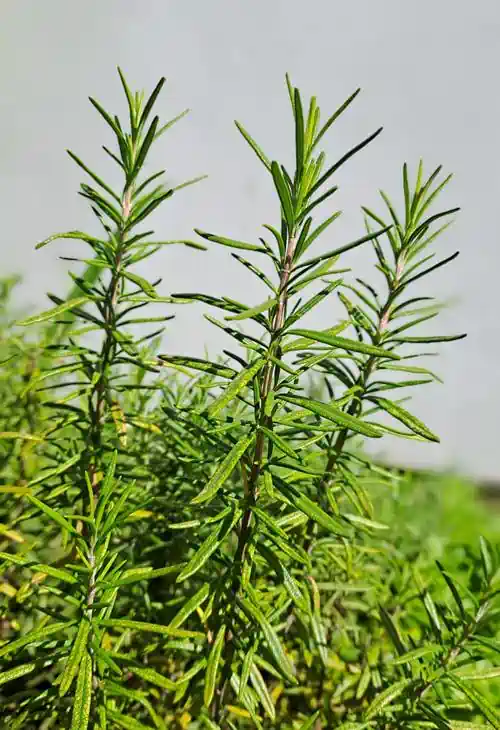Rosemary uses, benefits and risks
Rosemary
Fact Checked
×All the content published in our website is fact checked to validate its accuracy.
Visit our guidelines web page to learn more about our strict processes regarding how we review our content's sources: reliable and reputable journals, media websites, universities, colleges, organizations, and professionals.
Our articles are based on scientific evidence, and the references are included in its footnotes, which are clickable links to sound scientific papers.
First published: 15.Nov.2024
Overview
Rosemary is a spice and herb with a characteristic fragrance. It has been used as in traditional medicine in the Mediterranean region for millennia.
It is rich in polyphenols and has anti-inflammatory and antimicrobial properties. Its tea and essential oil have health benefits ranging from treating baldness to cancer prevention. This article looks into its uses, benefits and also its risks and side effects.
References and Further Reading
(1) Veenstra JP, Johnson JJ., (2021). Rosemary (Salvia rosmarinus): Health-promoting benefits and food preservative properties. Int J Nutr. 2021;6(4):1-10. Epub 2021 Jun 24. PMID: 34651071
(2) Petiwala Sakina M., Puthenveetil Angela G., Johnson Jeremy , (2013). Polyphenols from the Mediterranean herb rosemary (Rosmarinus officinalis) for prostate cancer. Frontiers in Pharmacology Vol 4, ISSN=1663-9812 doi=10.3389/fphar.2013.00029
(3) Habtemariam, Solomon, , (2016). The Therapeutic Potential of Rosemary (Rosmarinus officinalis) Diterpenes for Alzheimer’s Disease. Evidence-Based Complementary and Alternative Medicine, 2016, 2680409. https://doi.org/10.1155/2016/2680409
(4) European Medicines Agency, (2024). Assessment report on Rosmarinus officinalis L., aetheroleum and Rosmarinus officinalis L., folium Final – Revision 1. 29 May 2024, EMA/HMPC/681037/2021, Committee on Herbal Medicinal Products (HMPC) Based on Article 16d(1), Article 16f and Article 16h of Directive 2001/83/EC (traditional use)
(5) Nieto G, Ros G, Castillo J., (2018). Antioxidant and Antimicrobial Properties of Rosemary (Rosmarinus officinalis, L.): A Review. Medicines (Basel). 2018 Sep 4;5(3):98. doi: 10.3390/medicines5030098. PMID: 30181448
(6) Achour M, Ben Salem I, Ferdousi F, Nouira M, Ben Fredj M, Mtiraoui A, Isoda H, Saguem S., (2022). Rosemary Tea Consumption Alters Peripheral Anxiety and Depression Biomarkers: A Pilot Study in Limited Healthy Volunteers. J Am Nutr Assoc. 2022 Mar-Apr;41(3):240-249. doi: 10.1080/07315724.2021.1873871. Epub 2021 Feb 10. PMID: 33565922
(7) Mariem Achour, Laura Bravo, Beatriz Sarria, Maha Ben Fredj, Manel Nouira, Ali Mtiraoui, Saad Saguem, Raquel Mateos, (2021). Bioavailability and nutrikinetics of rosemary tea phenolic compounds in humans. Food Research International, Vol 139, 109815, ISSN 0963-9969, https://doi.org/10.1016/j.foodres.2020.109815
(8) Kornel A, Nadile M, Tsiani E., (2022). Evidence of the Beneficial Effects of Ursolic Acid against Lung Cancer. Molecules. 2022 Nov 2;27(21):7466. doi: 10.3390/molecules27217466. PMID: 36364289
(9) Achour, Mariem et al., (2021). Rosemary Tea Consumption Alters Peripheral Anxiety and Depression Biomarkers: A Pilot Study in Limited Healthy Volunteers. Journal of the American College of Nutrition (2021): 1-10 41(3), 240–249. https://doi.org/10.1080/07315724.2021.1873871
(10) Achour M, Mateos R, Ben Fredj M, Mtiraoui A, Bravo L, Saguem S., (2018). A Comprehensive Characterisation of Rosemary tea Obtained from Rosmarinus officinalis L. Collected in a sub-Humid Area of Tunisia. Phytochem Anal. 2018 Jan;29(1):87-100. doi: 10.1002/pca.2717. Epub 2017 Sep 12. PMID: 28895237
(11) Panahi Y, Taghizadeh M, Marzony ET, Sahebkar A., (2015). Rosemary oil vs minoxidil 2% for the treatment of androgenetic alopecia: a randomized comparative trial. Skinmed. 2015 Jan-Feb;13(1):15-21. PMID: 25842469
(12) Mark Moss, Jenny Cook, Keith Wesnes, Paul Duckett, (2003). Aromas of rosemary and lavender essential oils differentially affect cognition and mood in healthy adults . Clinical Trial Int J Neurosci. 2003 Jan;113(1):15-38. PMID: 12690999 doi: 10.1080/00207450390161903.
(13) Hadizadeh-Talasaz, F., Mardani, F., Bahri, N. et al., (2022). Effect of Rosemary Cream on Episiotomy Wound Healing in Primiparous Women: A Randomized Clinical Trial. BMC Complement Med Ther 22, 226 (2022). https://doi.org/10.1186/s12906-022-03675-1
(14) Mount Sinai. Rosemary. Accessed 10.Nov.2024
(15) EFSA, (2008). Use of rosemary extracts as a food additive 1 Scientific Opinion of the Panel on Food Additives, Flavourings, Processing Aids and Materials in Contact with Food (Question No EFSA-Q-2003-140) Adopted on 7 March 2008 . The EFSA Journal (2008) 721, 1-29 European Food Safety Authority, 2008
About this Article
Rosemary uses, benefits and risks, A. Whittall
©2024 Fit-and-Well.com, 15.Nov.2024. Update scheduled for 29 Nov. 2027. https://www.fit-and-well.com/health/rosemary-health-benefits.html
Tags: cancer, depression, essential oils, rosemary, digestive health, memory, mood, polyphenols, inflammation, wounds, joints.



